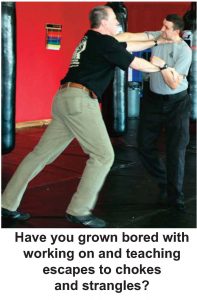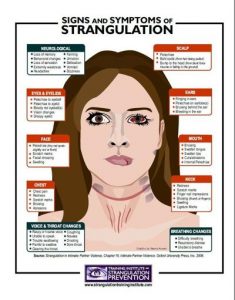“Sixty-five…fight on the Sambos parking lot,” the police dispatcher announced, as Glen Nowles and I prowled the midnight hour, wintery north Texas streets in our squad car.
“Ten-four,” I replied, and off we went to yet another pain-in-the-neck family argument, or redneck versus hippy, or disco versus cowboy, or, or…you get the picture and the numerous combinations that can happen after clubs-bars hours .
Sambos Restaurant. Odd name, huh? It was a chain like a Denny’s restaurant we see so much today. The names were changed to be more politically correct, but some historians say the name was never a derogatory black theme. It actually came from an abbreviation of the owners Sam Battistone and Newell Bohnett. The photo above is a franchise replica of out city’s Sambos.
The logo was often that an Indian boy, as in India. Open 24 hours, near Interstate 35, it was always a hotspot for the multi-culture drunks after the bars closed. When the country western bars and discos closed, many of the drunk patrons flooded into the all-night and late-night restaurants. And of course, we had our hands full with these knuckleheads. Quite a mix. Roy Rogers at one table. John Travolta or Dennis “Easy Rider” Hopper at another. I’ve had a few knock-down and drag-out fights and arrests in places like this.
When Glenn and I rolled up to Sambos, we did not see any fight in progress, but rather a downed woman and the Sambos manager out front on the wide sidewalk of the restaurant. Shivering from the cold, he waved us over with a motion of desperation. As we ran from the car, he yelled,
“He hit her and she fell. She’s dead! I think she’s dead!”
Probably knocked out when her head hit the pavement? Typical, I first thought. I went to her head and lifted it to see or feel for a wound as Glen grabbed for her throat and felt for a pulse.
“Did you call for an ambulance, too?” he asked the manager.
“No, just the police.”
“Well, call an ambulance,” Glen ordered, and he looked at me. “No pulse. No pulse,” he told me. “She’s dead.”
We began CPR on her. Glenn started working on the mouth and I took the chest, as we were taught. We switched positions, but worked non-stop, for what seemed like an hour, but it wasn’t. Both
Glen and I recognized her as someone we knew, an emergency room nurse at one of our hospitals.
She suddenly gagged! And coughed! What a sign, and her body started to spasm. She even started to mumble.
Glen and I dropped back on the cold ground beside her, pretty well exhausted. She sat up in complete shock, babbling about where she was. I wanted to say “from hell and back” but refrained. Who knows, maybe she went the other way? We all three sat there on the sidewalk. In the distance, we heard the sirens of an ambulance.
“Your heart stopped,” Glen said.
“My God, my God,” she said.
“What happened?” he asked.
“My husband and I…. had a fight. That is all I can remember.”
“He hit her!” the manager piped in. “He hit her, but she fell when he hit her in the chest. Hard in the chest!”
Apparently, it was a heart-stopping strike to the chest. Not all that unusual really. The ambulance pulled up and EMTs charged out with gear. They began checking her out as Glen and I stood up.
Typically, we follow the ambulance to the hospital and get all the complainant’s contact information to fill out a crime report. The next day, detectives would work the assault case, domestic or
otherwise, and that is the typical routine of that age and era.
“Did you see the car the husband left in?” I asked the manager as I stood up, and as the EMT crew readied the woman for transport.
“Left? He didn’t leave,” the manager answered.
“What? Where is he?” I asked.
“Well, he is right there,” and he pointed to the first booth in the corner of the front door. Through the huge glass windows, there sat a man with a menacing expression, smoking a cigarette, facing us with a cup of coffee on the table. He was right at the front window; directly facing us and saw everything we did.
“Him?” Glen asked, about as astonished as I was.
“Him,” the manager replied.
“He sat there and watched us do all this?” I said aloud but to myself mostly.
“Yup,” the manager said. “Sat there the whole time. watching.”
Glen and I exchanged glances. Now, getting someone’s heart to beat again is an emotional experience. It is a ride unlike no other. A ticking time bomb that must be diffused before explosions occur in the head and then in the body. It is a race. Then somehow, if it works, the magic of the universe kicks in. The spark of life. The heart beats yet again. So, to think that the husband sat and watched all this. Death, and life again.
I think I was the first to march toward the door. I was quite young then, and I was ready to destroy this guy with my bare hands. I am sure Glen, a bit older, was ready also. But, as so called, professionals we put the “skids on” that, squeezed the adrenaline before we entered the establishment. I sat at the table across from the guy. Glen stood. The husband barely looked at us. Coffee cup in his hand. he stared out the big window.
He looked like an unshaven, smelly scumbag, an uneducated, middle-aged drunk waste of air, time and space. Of course, that is such a snap judgment on my part, huh? I just wanted to toss that hot coffee right in his face, the cup and all, and smack him out of his seat. Couldn’t. But if he made so much as the wrong move? My dream would come true.
The conversation went, to the best of memory, something short like this:
“Coffee good?” I asked quietly.
“No,” he said.
I nodded.
“Any guess where we’re going?” I said.
“Jail,” he said.
“Coffee’s not much better there either. Maybe worse.” I said.
All that angst, as actor/writer Billy Bob Thornton would call it years later – “angst and shit,” and it came down to a calm, few lines about the coffee. Iconic. Laconic. Ironic.
“Up,” I said. I stood. He stood and Glenn cuffed his hands. Glenn searched him as I watched. We marched him to the squad car. No chance for a fight. I guess he could tell that Glen and I were about a thread away from going rodeo right then and there all over him.
Instead, we booked him into the city jail for aggravated assault and the rest is history in a set of books I ain’t read yet. We went to the next call. The detectives did their thing. The D.A.s office did their thing.
I guess they call us professional when we keep our cool at times like these. Sometimes it ain’t easy, but it got easier as the years rolled along. I grew a callous on my hide that was once three inches thick. But I see that cover peeling away now, that bare unpredictable nerve coming closer to the surface again. I hope I can keep some of both that callous and that nerve.
We continued to see the nurse at work for another year. She got a divorce. With each encounter with her, behind the curtain of our conversations, was some kind of a bond. Funny feeling. She told us she was back in school. She graduated with another medical degree and moved away. So, the nurse got a divorce and moved away. That ex-husband by the way? Turned out he really was an unshaven, smelly scumbag, an uneducated, middle-aged, drunk, waste of air, time and human space. A lot of my snap judgments do turn out. Imagine that.
There was a bit of police history here too. As the years went by Glen, I and others did save a few more lives out on the proverbial “streets.” We weren’t EMTs who did this routinely, but we did once in a while. Oddly, ironically, decades later when our police department became more modernized and larger with the times, a new police chief instituted a medal for lifesaving. The first recipient had rescued a woman from a burning car wreck as I recall, and the young officer deserved some creds for his actions. Sure. This medal with news media, was awarded at a big, department ceremony. Great rounds of applause. Yipee.
But some of us older hands sat quiet and could not help but think of the times we had saved lives in the past years. A quick, accidental exchange of glances in the ceremony between me and other older vets said it all to me,
“Oh well, guess the new kids get medals now.”
Such is life. And death. Imagine trying to reward all those deeds retro-actively anyway. How exactly would you do that? And who among us would walk into an admin office and ask, “Can I have a medal, please?” Not me. Not the other vets either.
The medals are a good idea, though I guess, for the future. Good for morale but also it is a special moment to do such a thing. Real heroes doing real work. But the “across the street at the fire station? The hospitals? People are saving lives all the time. Way, way more than any of us every did.
Hey, even CPR has changed these days, emphasizing more on the chest pumping and way less on the mouth to mouth. Check out the new courses. You never know when you need it.
Check out these police memoirs books from Hock, click here…








